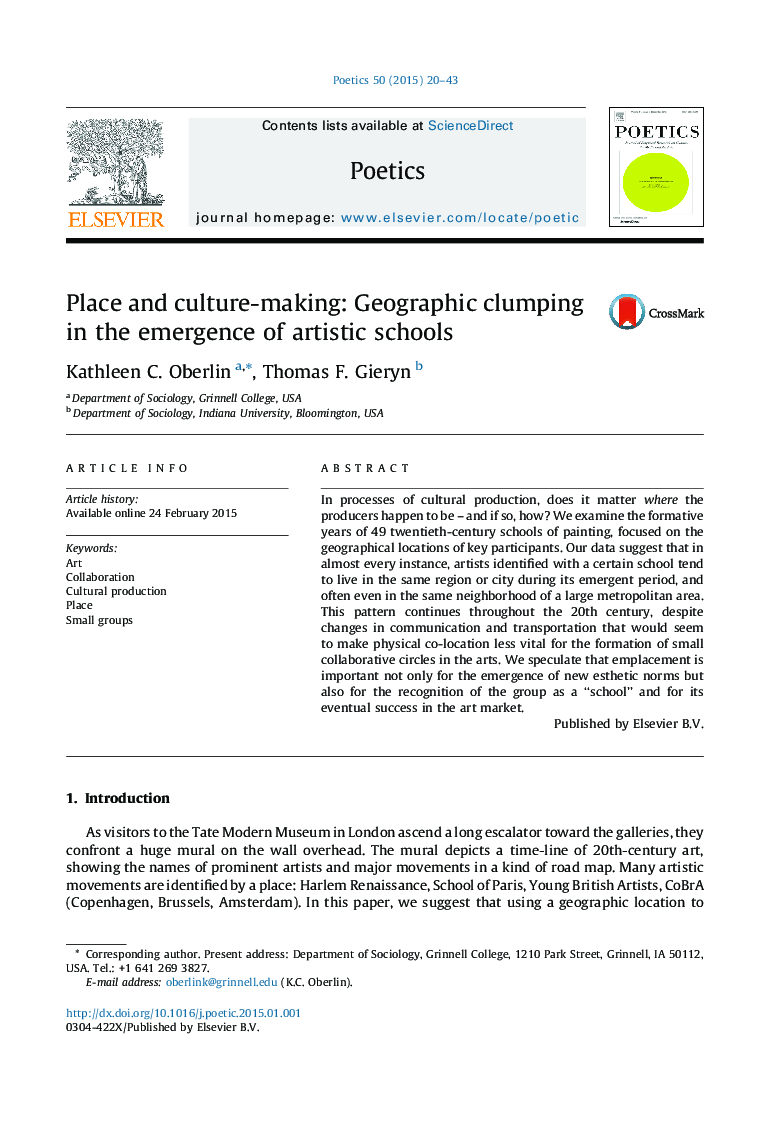| Article ID | Journal | Published Year | Pages | File Type |
|---|---|---|---|---|
| 1128256 | Poetics | 2015 | 24 Pages |
•We find identified artists lived in the same city during a school's emergent period.•Patterns persist throughout the 20th century despite shifts to minimize co-location.•Place matters as it amasses diverse conditions vital for a new school to succeed.•Sites where collaboration occurs may become numerous and in less conventional places.
In processes of cultural production, does it matter where the producers happen to be – and if so, how? We examine the formative years of 49 twentieth-century schools of painting, focused on the geographical locations of key participants. Our data suggest that in almost every instance, artists identified with a certain school tend to live in the same region or city during its emergent period, and often even in the same neighborhood of a large metropolitan area. This pattern continues throughout the 20th century, despite changes in communication and transportation that would seem to make physical co-location less vital for the formation of small collaborative circles in the arts. We speculate that emplacement is important not only for the emergence of new esthetic norms but also for the recognition of the group as a “school” and for its eventual success in the art market.
